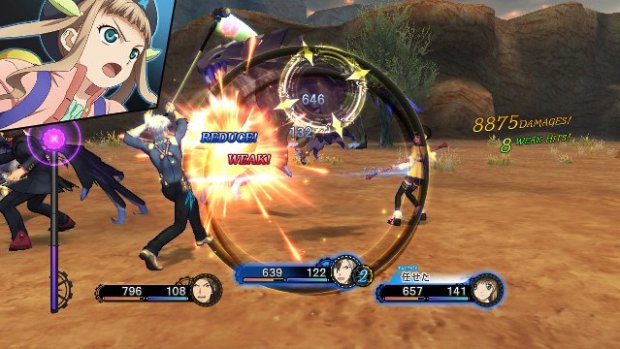Tales of Xillia 2 Review
It has taken a long time for Tales of Xillia 2 to get here; in fact, while we only got the original game in August, 2013, the Japanese already had the sequel in November of 2012. Still, better late than never, and RPG fans are certain to be grateful to Namco Bandai for taking the time bring this game over. Thankfully, this is far from a rushed localisation, resulting in a damn fine JRPG.
Following on a year after the original, you play as Ludger Kresnik, a young chef who, on his first day at work, crosses paths with a young girl named Elle. She is trying to get to the mystical Land of Canaan, a place where she hopes to meet up with her father. Together, they are embroiled in the greater happenings of the world they live in, as well as an added layer of alternative timelines and parallel worlds.
It’s a relatively complex tale, with a cast of many characters, some from the original game, and this sequel does a very good job of putting you in a world that feels very alive, with a ton of NPCs to speak to, optional dialogues between party members and the odd element of player choice within cutscenes as well. What doesn’t feel quite right is Ludger playing the silent protagonist role: with everyone around him all too eager to talk and express themselves, his occasional grunts, groans and sound-bytes come at a detriment to his character, even if he is meant to be your avatar in this world.
Eschewing the turn-based combat of its peers, Xillia 2 adopts a very effective real-time approach to combat. It’s very much like a basic third-person brawler in many ways, with players controlling Ludger, but battles also take place with three other party members that will work autonomously, until given orders or a strategy. These other characters can also link with our hero, offering a few chances to flank enemies, activate special abilities and deal even more damage.
Other battle systems come into play, most of which aren’t explained terribly well, and you may be overwhelmed with various terms and unhelpful jargon. But once a level of understanding is reached, battling enemies is an enjoyable endeavor, especially as battles with normal mobs can be over in a matter of seconds, alleviating the usual JRPG annoyance of random battles. When you’re playing any JRPG, you expect to take part in thousands of fights, so it’s great to see a combat system that offers so many options and so much depth, especially when you factor in the ability to wield multiple weapons and change them mid-combo (or chain, to use the proper nomenclature).

Outside of fighting various beasties, you are given a certain amount of length on the leash to explore the various cities and environments that make up this modern looking world. However, this leash is regularly pulled shorter by an Animal Crossing-like debt system. Early on, you end up owing a lot of money and have to resort to paying it off with a loan, and doing so is a constant task that is a necessity to progress. Essentially, you have to pay the money in installments, and travel to new areas is completely blocked off until that installment is paid, impeding your path on the main story quest.
To earn the money you need, you could grind enemies, or more likely you’ll be taking on quests from a Job Board, with tasks ranging from your usual fetch quests, to battling so many enemies. Oh, and finding cats, because felines are a constant feature of Tales of Xillia, especially Rollo, the lovably obese cat owned by Ludger. A major side-quest sees you finding a hundred of the furry little buggers for a crazy cat lady who lives in your apartment block, but you can then send these cuddly runaways out into the world to find items for you.
While side-quests are always a nice diversion, it’s just irritating that the debt system itself becomes a way to pad out the game, prohibiting progress for no real reason. Take out the need to pay off instalments, and this adventure would be a great many hours shorter. This kind of quest should be optional and not stop the player from progressing the main narrative.
It’s a shame that the Debt system is so intrusive, as I wanted to reach the next story mission as soon as possible, to see more of Xillia’s world and listen to more conversations between the characters. The dialogue in particular is a cut above the average JRPG and is entertaining enough to make you want more, while the presentation here is of a high standard. There are also some very well done cutscenes, with some great fight sequences and the occasional animated video.
VERDICT: A sound JRPG, Tales of Xillia 2 offers a fun yet deep battle system, a great story with tons of optional narrative, and plenty of in-game background information that makes it worth playing even if you didn’t play the original game. The debt system can be annoying, but once you get past that and you want a Japanese roleplaying game that’s a little bit different, you can’t go wrong with this.

VERY GOOD. An 8/10 is only awarded to a game we consider truly worthy of your hard-earned cash. This game is only held back by a smattering of minor or middling issues and comes highly recommended.
Review code provided by publisher.




